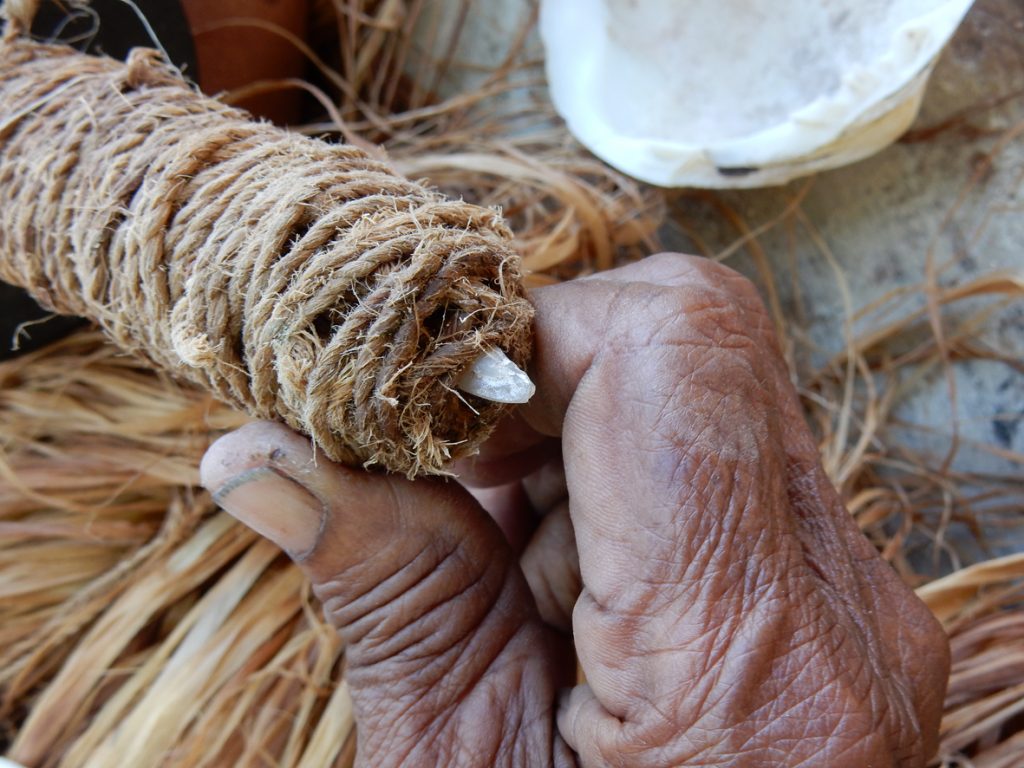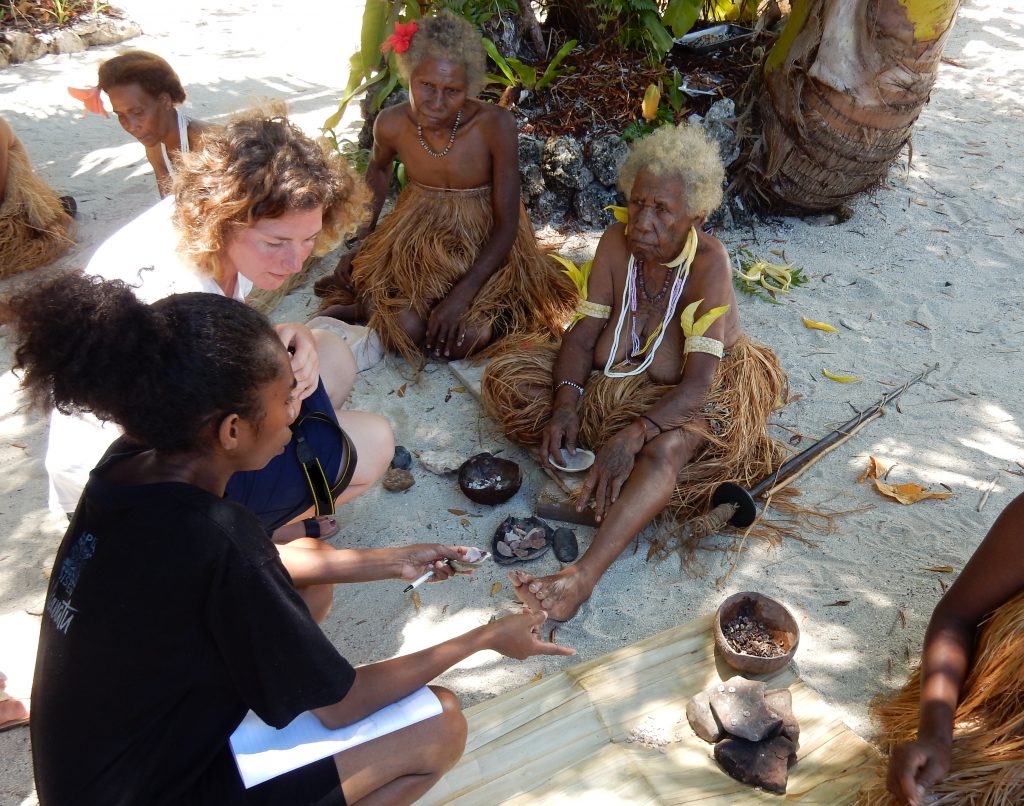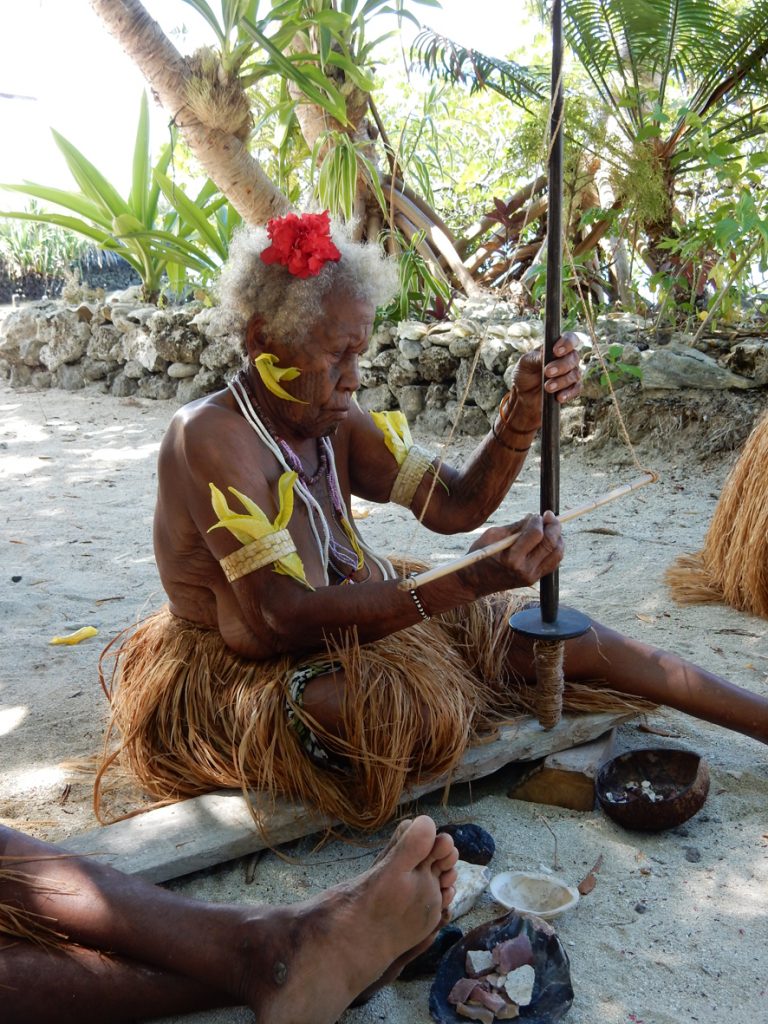Archaeological research in the Melanesian cultural area needs the input of ethnology. The living traditions and ways of life of different ethnic groups appear like a unique reflection of bygone times, as does the study of material cultures. For this reason the “Prehistory of the Solomon Islands” project of the Bonn-based commission of the DAI organized a workshop on the traditional method of manufacturing shell money in Langa Langa on the island of Malaita and conducted surveys with questions for the local population.

The oldest shell necklaces on the Solomon Islands are more than 500 years old and once served as a means of payment. The value of a necklace depended on the numbers of beads, their colour and the quality of the grinding. Today shell money (“tafuliae”) is still used as a secondary currency, for instance for paying the bride price. The archaic technique of boring a hole in shell flakes using a bow drill equipped with a flint bit for threading bead necklaces is mastered today by very few people only. It is of inordinate value to archaeo-ethnology that they do, since their know-how provides unique insights into a prehistoric way of life and gives archaeologists important data for the interpretation of find material.

Some ancient traditions like “shell money” still survive today. Elderly inhabitants’ knowledge and know-how is of great value to the excavation team (Photo: DAI KAAK) 
Villager in Langa Langa making shell money (Photo: KAAK)